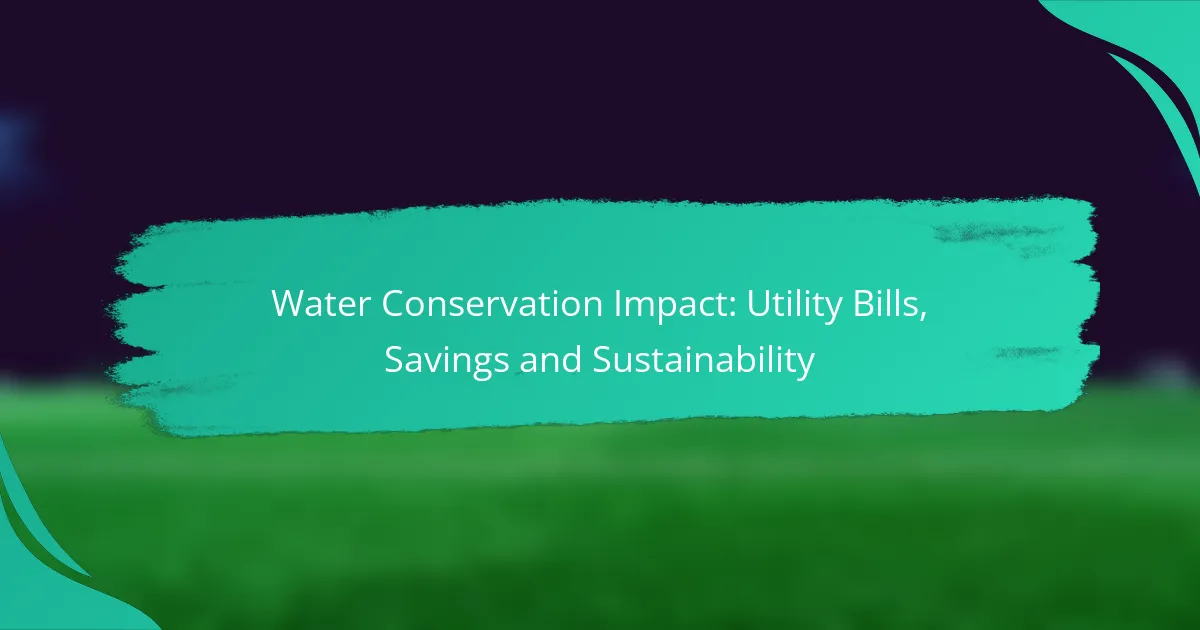Water conservation is not only essential for environmental sustainability but also offers tangible financial benefits by lowering utility bills. By adopting effective water-saving practices, both households and businesses can significantly reduce their water consumption, leading to noticeable savings on monthly expenses. Monitoring water usage through various methods can further enhance awareness and encourage more sustainable habits.
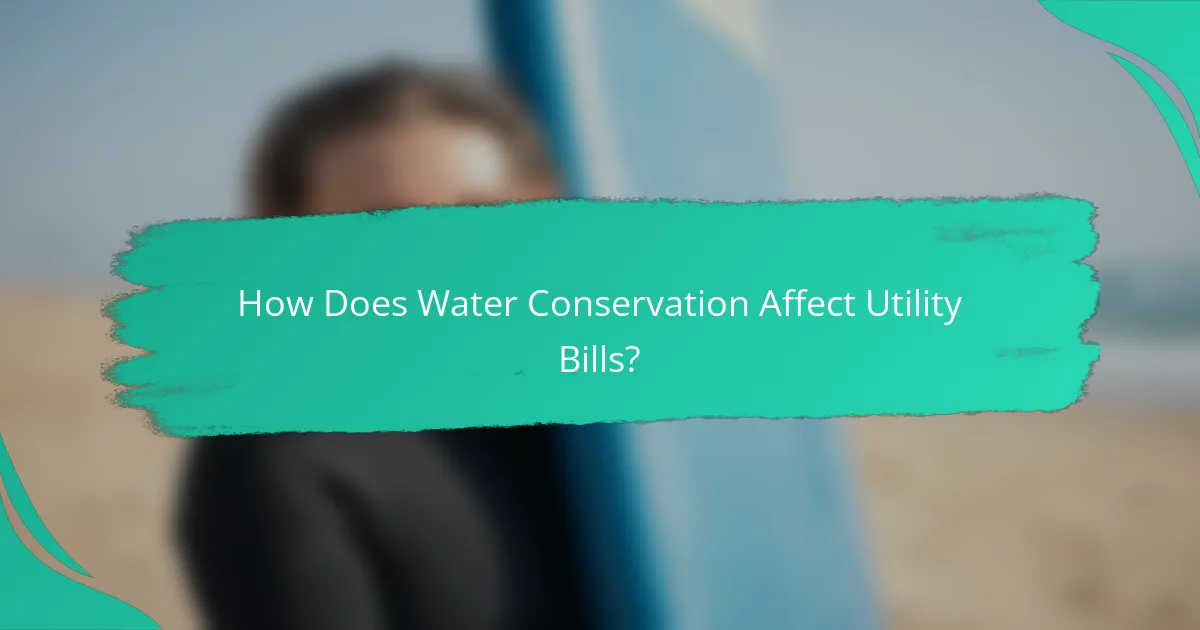
How Does Water Conservation Affect Utility Bills?
Water conservation can significantly lower utility bills by reducing the amount of water consumed, which directly impacts costs. By implementing water-saving practices, households and businesses can see a noticeable decrease in their monthly expenses related to water usage.
Reduction in monthly costs
Conserving water leads to lower monthly utility bills as charges are typically based on the volume of water used. Simple actions like fixing leaks, using water-efficient appliances, and reducing outdoor watering can result in savings of 20-50% on water bills. For example, a family that reduces their consumption from 10,000 liters to 8,000 liters per month could save a significant amount each billing cycle.
Long-term financial savings
In addition to immediate savings, water conservation contributes to long-term financial benefits. Over time, the cumulative effect of reduced water usage can lead to thousands of dollars saved. Investing in water-efficient fixtures may have upfront costs, but the return on investment often pays off within a few years through lower bills.
Impact on tiered pricing structures
Many utility companies use tiered pricing structures, where the cost per gallon increases with higher usage levels. By conserving water, customers can stay within lower tiers, avoiding higher rates. For instance, if a household reduces its usage and remains in the first tier, they can save significantly compared to those who exceed the threshold and incur higher charges.
Case studies from California
California has implemented various water conservation programs, leading to notable reductions in utility bills for residents. For example, during the recent drought, many households adopted water-saving technologies and practices, resulting in an average savings of 30% on their water bills. Programs offering rebates for water-efficient appliances have further incentivized conservation, demonstrating the financial benefits of reducing water consumption in a state facing water scarcity.
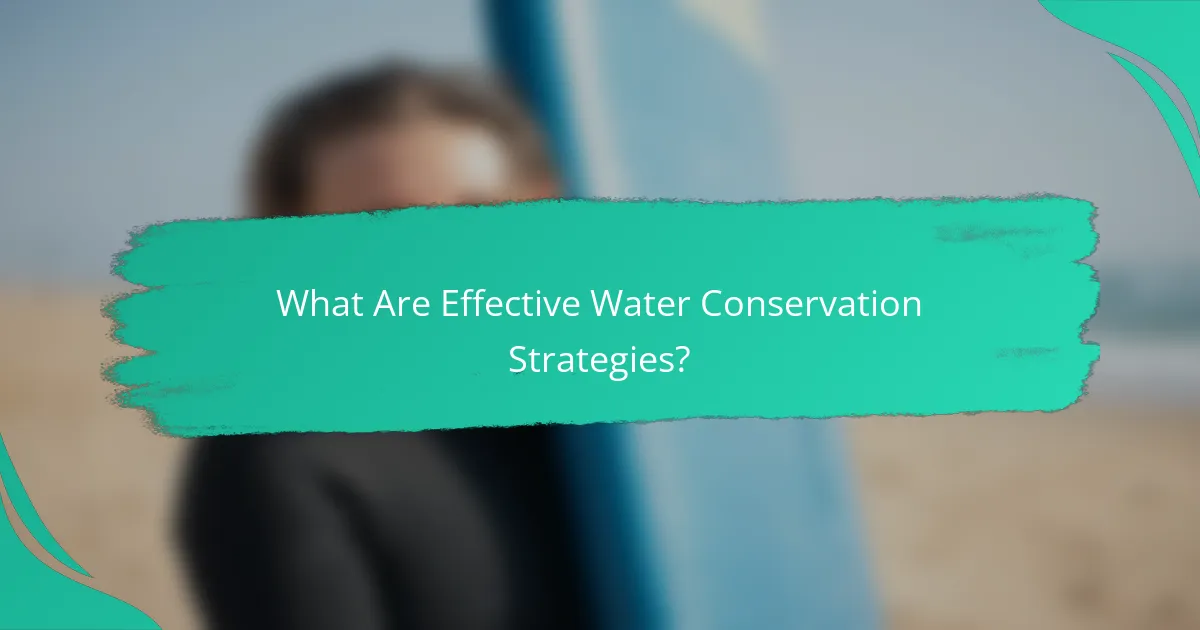
What Are Effective Water Conservation Strategies?
Effective water conservation strategies help reduce water usage, lower utility bills, and promote sustainability. Implementing these methods can significantly impact both personal finances and environmental health.
Smart irrigation systems
Smart irrigation systems use technology to optimize watering schedules based on weather conditions and soil moisture levels. These systems can reduce water waste by adjusting the amount of water delivered to plants, ensuring they receive just what they need.
Consider investing in a system with sensors that monitor rainfall and soil moisture. This can lead to savings of up to 50% on outdoor water use, depending on your landscape and local climate.
Rainwater harvesting
Rainwater harvesting involves collecting and storing rainwater for later use, such as irrigation or flushing toilets. This practice not only conserves potable water but can also lower your water bills.
To implement this, install rain barrels or a larger cistern connected to your roof’s downspouts. Depending on your location, you could capture thousands of liters annually, especially in regions with significant rainfall.
Low-flow fixtures
Low-flow fixtures, such as showerheads and faucets, reduce water flow without sacrificing performance. These fixtures can cut water usage by 20-60%, leading to noticeable savings on your utility bills.
When selecting low-flow options, look for products that meet WaterSense standards, which ensure efficiency and performance. Replacing older fixtures can be a straightforward DIY project that pays off quickly.
Water-efficient landscaping
Water-efficient landscaping, or xeriscaping, involves designing gardens that require minimal irrigation. This can include using drought-resistant plants, mulching, and grouping plants with similar water needs together.
Consider native plants that thrive in your local climate, as they typically require less water and maintenance. By transforming your landscape, you can significantly reduce outdoor water consumption while enhancing biodiversity.
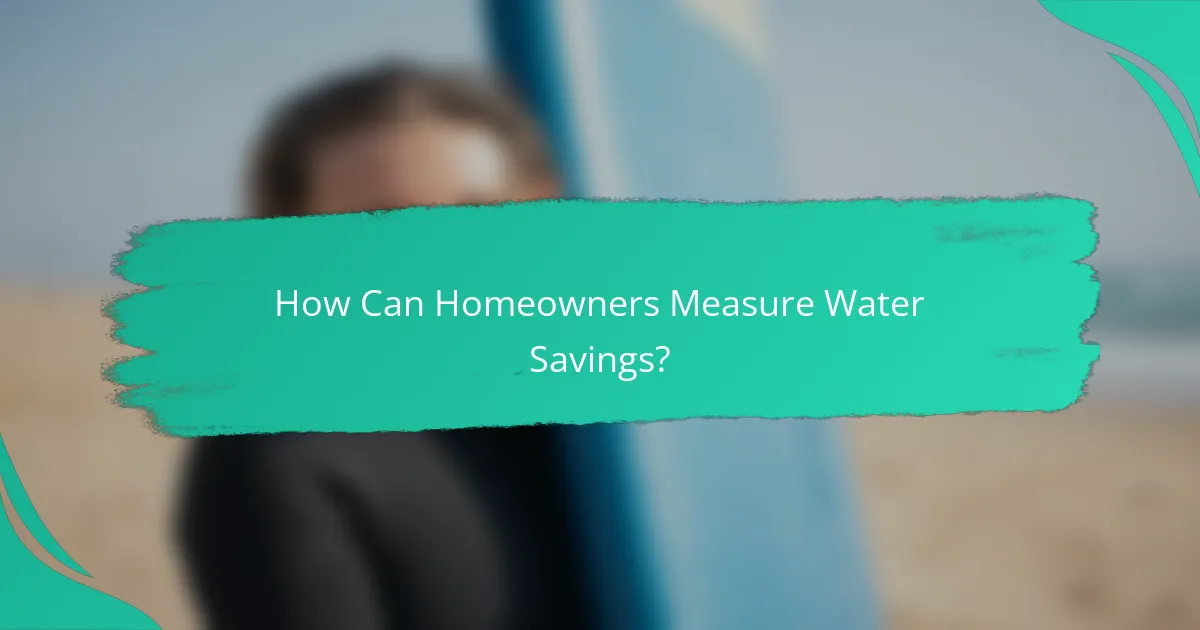
How Can Homeowners Measure Water Savings?
Homeowners can measure water savings through various methods, including monitoring water meter readings, utilizing usage tracking apps, and comparing current bills with previous ones. These approaches provide clear insights into consumption patterns and potential savings.
Water meter readings
Regularly checking your water meter is one of the most straightforward ways to measure water savings. By noting the meter reading before and after a specific period, you can calculate the total water used. For example, if your meter shows a reading of 10,000 liters at the start of the month and 9,000 liters at the end, you saved 1,000 liters.
To ensure accuracy, take readings at the same time each month and consider any changes in household size or habits that might affect usage. This consistency helps in tracking trends over time.
Usage tracking apps
Many homeowners find usage tracking apps helpful for measuring water savings. These apps can connect to smart water meters or allow manual entry of meter readings, providing real-time data on consumption. Some popular apps even offer tips for reducing water use based on your specific patterns.
When choosing an app, look for features such as customizable alerts for unusual usage spikes or comparisons with local averages. This can help you stay informed and motivated to conserve water.
Comparative analysis with previous bills
Comparing your current water bill with previous bills is an effective way to assess water savings. Look for trends in your monthly usage and identify any significant changes. If your bill shows a decrease in usage, it may indicate successful conservation efforts.
To make this analysis more effective, consider creating a simple table to track your monthly usage over several months. This visual representation can highlight patterns and help you set realistic savings goals for the future.

What Role Do Local Governments Play in Water Conservation?
Local governments play a crucial role in water conservation by implementing policies and programs that promote sustainable water use. They often create frameworks that encourage residents and businesses to adopt water-saving practices, thereby reducing overall consumption and preserving water resources.
Incentive programs
Local governments frequently establish incentive programs to motivate residents and businesses to conserve water. These may include rebates for installing water-efficient appliances, financial assistance for xeriscaping, or discounts on utility bills for those who reduce their water usage. Such programs can lead to significant savings on monthly expenses while promoting sustainable practices.
For example, a city might offer a $100 rebate for homeowners who replace old toilets with high-efficiency models. This not only lowers water consumption but also provides immediate financial relief.
Public awareness campaigns
Public awareness campaigns are essential for educating the community about the importance of water conservation. Local governments often use various media channels, including social media, flyers, and community events, to disseminate information on water-saving techniques and the impact of water scarcity.
These campaigns can encourage behaviors such as fixing leaks, using mulch in gardens to retain moisture, and understanding water usage patterns. Engaging the public through workshops or school programs can further enhance awareness and participation.
Regulatory frameworks
Regulatory frameworks established by local governments set the standards for water use and conservation practices. These regulations may include restrictions on outdoor watering during droughts, requirements for water-efficient landscaping in new developments, or mandates for water recycling systems in commercial buildings.
For instance, a municipality might enforce a limit on lawn watering to twice a week during summer months to conserve water. Compliance with these regulations not only helps manage local water resources but also fosters a culture of conservation within the community.
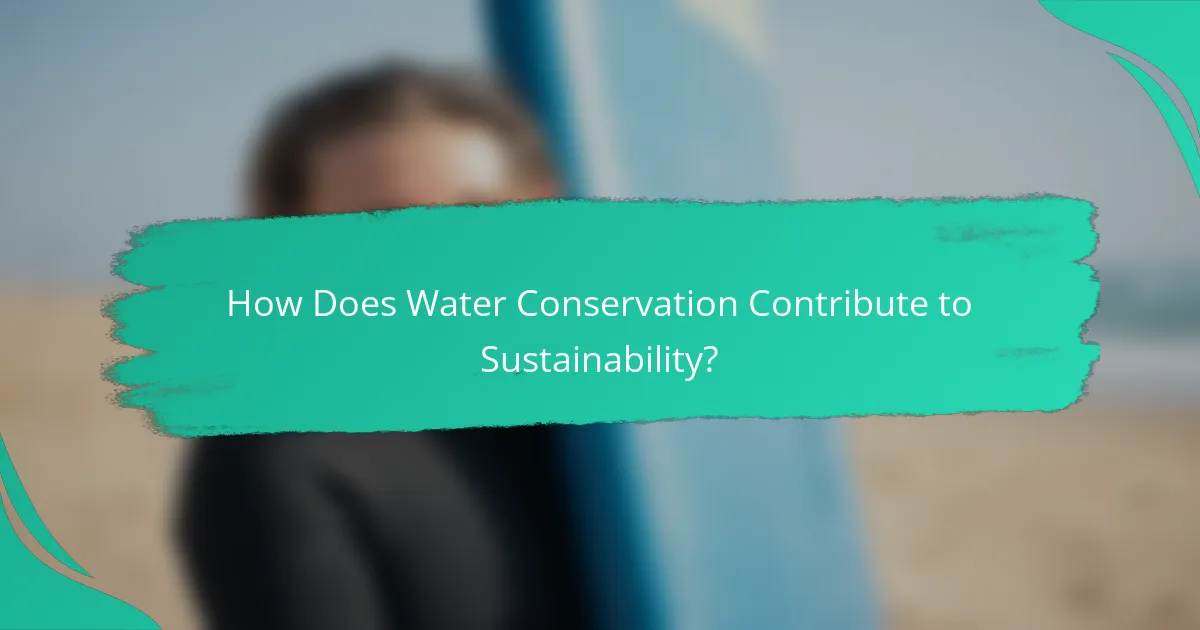
How Does Water Conservation Contribute to Sustainability?
Water conservation plays a crucial role in promoting sustainability by reducing resource depletion and minimizing environmental degradation. By using water more efficiently, communities can lower their ecological footprint and support long-term environmental health.
Reduced environmental impact
Conserving water directly reduces the energy required for water treatment and distribution, which in turn lowers greenhouse gas emissions. For instance, using water-efficient appliances can decrease household water usage by 20-30%, leading to significant energy savings.
Additionally, less water extraction from natural sources helps maintain the balance of local ecosystems. This can prevent issues like soil erosion and habitat destruction, which are often exacerbated by excessive water withdrawal.
Preservation of local ecosystems
Water conservation is essential for preserving local ecosystems, particularly in areas where water scarcity is a concern. By reducing water consumption, communities can ensure that rivers, lakes, and wetlands maintain their natural flow and health.
For example, implementing rainwater harvesting systems can provide an alternative water source while allowing natural water bodies to replenish. This practice supports biodiversity and helps sustain wildlife habitats that rely on consistent water availability.
Enhancement of community resilience
Communities that prioritize water conservation are better equipped to handle droughts and water shortages. By fostering a culture of efficient water use, residents can reduce their vulnerability to climate-related impacts.
Moreover, investing in water-saving technologies, such as drip irrigation in agriculture, can lead to more reliable food production. This not only supports local economies but also enhances food security during challenging times.
